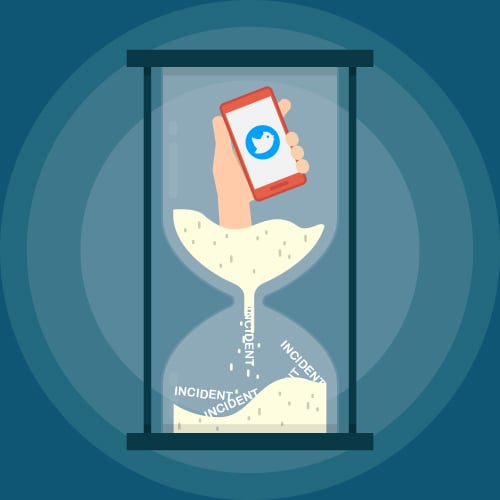Imagine, you’re celebrating your winnings from an exciting Halloween night aboard the Bahamas Celebration cruise line.
Then all of a sudden the lights dim, then they begin to flicker. “Oh, this is fun!”
As you’re exclaiming to your family the cruise line is putting on a haunted house show…you realize something.
No haunted house production here – this is for real! The ship you’re on hit something. We’re not talking about a little nudge.
We’re talking about a Costa Concordia type of hit. You know, the incident that occurred off Isola del Giglio in Tuscany back in 2012. An incident that lead to the loss of 32 lives.
What occurred around 9 p.m. Halloween night is a similar incident proving to be as real as it gets. The Bahamas Celebration cruise was en route to Florida when it struck an unknown obstruction, lost power and was forced to return to port on the Grand Bahama Island.
Passengers on board were to be immediately evacuated…BUT that never happened according to plan. That’s because it appears there was no incident management plan in place or no one knew how to communicate it if one ever existed.
Keep reading and you’ll see how not only the cruise industry can learn how to improve incident management from Disney – your operation can too.
The Rigid Dichotomy Between the Cruise Industry and Disney
Around the same time as Celebration was experiencing chaos from their accident, Disney experienced a fire on the Seven Dwarfs Mine Train ride caused by embers from their fireworks show.
Protocol was immediately initiated, the fire was put out and the ride reopened within an hour. We’d bet that even during a massive scale incident, Disney would respond accordingly. They know how to take care of business.
All riders were immediately evacuated from the attraction. Firefighters quickly arrived on scene and extinguished the blaze within minutes.
The principle point to be made here is that Disney knows how to proactively mitigate incidents when they occur.
|
An emergency response plan is in place and all departments are on the same page. Something the passengers of this weekend’s cruise never experienced.
Eyewitness statements that countered reports maintained by the cruise line expressed the lack of efficacy among crewmembers.
“One crew member would say one thing, and then another crew member would say something else…They had no idea what to do.” – Cindy Parette, Bahamas Celebration passenger
According to the cruise line, there wasn’t anything to fret about. Everything was copacetic.
“No passengers were ever in any danger, and everything was handled in an organized and efficient way by ship, corporate and Bahamian personnel.” – Bahamas Celebration
If that’s the case, then we ask…why do eyewitness accounts declare the opposite?
Panic and Fear is not the Result of Effective Incident Management
If you don’t have an emergency management plan in place that allows your staff to effectively communicate and mitigate incidents while they’re occurring, you’d better reconsider the adage “It won’t happen to us,” because let us tell you – it can and will!
Don’t mean to frighten you with Murphy’s Law…we take that back, we do mean to. This is dangerous stuff.
The cruise industry and Disney are on different ends of the gamut. Disney shows you how efficiently and effectively you can handle incidents with communication and protocols to handle in place.
Port personnel might have handled the incident successfully on their end. However, it’s clear the incompetence of Bahama Celebration’s crew is inexcusable.
The effect of an efficiently executed emergency management plan is NOT panic and fear and you don’t have to be a rocket scientist to get it .
Where’s all the peace of mind in that? There isn’t any – for management and certainly not for your customers.
All industries are afforded takeaways from these contrasting incidents. You don’t have to be in the cruise industry to learn from Disney or the importance of having a plan and valuable solutions in place.
Control Your Chaos in Real Time not When Staff Deems It’s Time
Let’s take it back to the moment you realize your haunted house theory didn’t pan out.
With crew responding frantically and trying to handle the situation, how do YOU believe they’re handling communication among multiple people in multiple locations throughout the ship? Especially when they’re doing it the way they want, not the way you need them to.
We’ll take a good guess and say they’re probably using radios to communicate with zero protocols in place or being followed. Well, how effective are radios when people are SCREAMING IN YOUR EAR?! Not too effective, right?
Since we’re solution providers AND while we’re already adding salt to the wound, from eyewitness accounts we know the crew had no idea what they were doing. If this resonates with your operation – no problem – we’ve got two solutions.
- An incident management system (IMS)
- IMS mobile apps
Disney surely has efficient communication lines in place and protocols that are initiated when an incident is identified, why shouldn’t the cruise line. Why shouldn’t your operation?
We wrote an article on the 18 ways an IMS can create order and why it matters, but for this case it’s important to highlight six unequivocal benefits of using these two solutions.
- Instant communication. The ability to enter details and the status of an incident via text, email or the IMS mobile handheld devices immediately.
An incident of this magnitude will require instant communication among all crew members. At any moment, anything could happen. How will you make sure your staff is ‘in the know?’ - All your staff can manage incident details from multiple locations. When a user makes or updates an entry in an IMS, it immediately appears on all screens for staff that have permission to see them.
Supervisors aboard the Bahamas Celebration could’ve managed the incident with confidence that trickled down to the passengers. With everyone confident in the crew’s handle on the incident, chaos would not have ensued the way it did. - Organize and color code your incidents by status. In an IMS, incidents are color coded by status so nothing gets overlooked or omitted.
Rather than the instance where one crew member gave directions different from another, all parties can ‘be on the same boat.’ Effectively handling incidents also means knowing when your crew have already controlled the situation. More order, less confusion, peace of mind. - Alerts and notifications for few or many incident types. Scheduling and sending alerts to multiple staff members is seamless. When a specific incident is reported, a message is sent to need-to-know members of your team.
All departments and supervisors aboard the ship will then know where to direct their efforts and response teams. Don’t waste time on identifying responsibilities in the moment. Be ready to respond when you get that vital text or email. - Manage your protocols. Set up your protocols to display in your system and mobile devices – by incident type – so that your staff know exactly what to do when ‘the water rises.’ It’s common maritime protocol to report to your muster station, but give your crew the steps to take on an emergency right on their IMS mobile devices.
Step 1: Get to your muster station!
Step 2: Fill life boats to capacity with passengers.
Step 3: Lower life boats (list specific instructions)!
You might find this obvious, but anything can happen in the heat of the moment. Don’t let the moment get the best of your crew. Give them the ability to be successful. Eliminate as much chaos and ensuing panic by arming your staff with the ability to confidently direct and control the situation. - Allocation of your resources. View the number and details of incidents assigned to each of your departments and rapid response teams. This will help you determine who might be the quickest to respond to an area.
An IMS and mobile apps can signify the difference between a cruise line industry disaster and another lesson from Disney. Don’t let the power go out on your operation – if you catch our drift.
An Industry Tidal Wave You Can Avoid
Lack of ability to successfully handle disasters seem to be on the rise throughout the cruise line industry in the last couple of years.
Cruise line sales haven’t been majorly impacted by the incidents. But with the upswing in disasters, we’d bet the long-term effect will be ‘panic pricing’ if nothing changes to optimize emergency management.
For you, this can be avoided.
Use this article to educate your staff on the importance of properly executing your emergency management plan. Share this article with your colleagues so your industry can have a seawall in place to prevent potential hazards.
It’ll help you avoid the loss of your customers while keeping your bottom line from plummeting to the bottom of the ocean, ultimately affecting your peace of mind.




